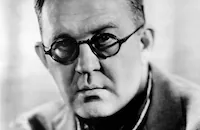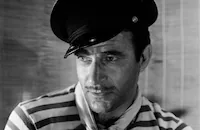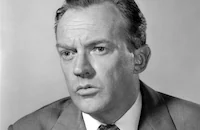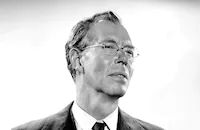Cheyenne Autumn

Brief Synopsis
Cast & Crew
John Ford
Richard Widmark
Carroll Baker
Karl Malden
Sal Mineo
Dolores Del Rio
Film Details
Technical Specs

Synopsis
In the 1870's, the Cheyenne Indians are taken from their Wyoming homelands and moved to a barren Oklahoma reservation. After a year of waiting for Federal aid that never arrives, the original band of 1,000 has been reduced by disease and starvation to a mere 286. Desperate, the survivors decide to make a 1,500-mile trek to their former Yellowstone hunting grounds. Accompanying them is Deborah Wright, a Quaker schoolteacher sympathetic to their plight. And pursuing them is a cavalry troop headed by Captain Thomas Archer, Deborah's betrothed, who hopes to resolve the dilemma without bloodshed. But a young hotheaded Cheyenne brave named Red Shirt precipitates several skirmishes in which U. S. soldiers are killed. When the newspapers play up the incidents by depicting the Cheyennes as "marauding savages," Wyatt Earp and Doc Holliday are pressured into organizing a war party. Earp, however, deliberately leads his drunken posse in the wrong direction and remains on the trail until public panic subsides. With the coming of winter, the Cheyennes split into two groups: half continue their journey; half surrender to the brutal Captain Wessels at Fort Robinson. Upon learning that Wessels intends to march the Indians back to Oklahoma, Captain Archer goes to Washington to seek the help of the Secretary of the Interior. Before he can do so, the Indians revolt, kill Wessels, and flee into the snow. As they are trapped by troops prepared to massacre them, Archer arrives with the Secretary, who negotiates a treaty which permits the Cheyennes to return to their homeland. Once there, Red Shirt and Chief Little Wolf face each other with pistols to settle their dispute over the latter's wife. Red Shirt is killed, and Little Wolf, having broken his vow never to kill another Cheyenne, goes into self-imposed exile. As peace is restored, Archer and Deborah decide to remain with the Indians who have survived the historic ordeal.

Director

John Ford
Cast

Richard Widmark

Carroll Baker

Karl Malden

Sal Mineo

Dolores Del Rio

Ricardo Montalban

Gilbert Roland

Arthur Kennedy
Patrick Wayne
Elizabeth Allan

John Carradine

Victor Jory

James Stewart

Edward G. Robinson

Mike Mazurki

George O'brien
Sean Mcclory

Judson Pratt
Carmen D'antonio

Ken Curtis

John Qualen
Shug Fisher
Nancy Hsueh

Walter Baldwin
Chuck Roberson

Harry Carey Jr.

Ben Johnson
Jim O'hara
Chuck Hayward
Lee Bradley
Frank Bradley

Walter Reed

Willis Bouchey
Carleton Young
Denver Pyle
Nanomba "moonbeam" Morton
Dan Borzage
Dean Smith
David Humphreys Miller
Bing Russell
Crew
Frank Beetson Sr.
William Clothier
Richard Day
Ray Kellogg
Otho Lovering
Alex North
Ann B. Peck
Norman Pringle
Russ Saunders
Darrell Silvera
Bernard Smith
Fae Smith
Wingate Smith
Jack Solomon
Francis E. Stahl
James R. Webb
Ralph Webb
Sherry Wilson

Videos
Movie Clip




Trailer
Hosted Intro
Film Details
Technical Specs

Award Nominations
Best Cinematography
Articles
Cheyenne Autumn
John Ford to Peter Bogdanovich
John Ford, the director of Stagecoach (1939), Fort Apache (1948) and The Searchers (1956), wanted to try a different approach to the Western, the genre for which he still stands today as poet laureate. Ford felt, perhaps in his old age or perhaps because of his Irish Catholic guilt, that amends should be made to the Native Americans, a group that was routinely demonized in others' Westerns, or delegated to the mysterious 'Other' in his own films. Ford chose as the basis for his story, Cheyenne Autumn, a novel by Mari Sandoz. The plot follows a small band of Cheyenne Indians attempting to escape their infertile Oklahoma reservation to their own lush Wyoming homeland, from which they were transported after having surrendered to the U.S. government in 1877. Originally numbering more than 900, only 300 Cheyenne managed to survive starvation and debilitating health to even attempt to make the trek back home.
Ford had worked on a treatment of the book in 1957, but could not generate the funding until Bernard Smith, who had produced How the West Was Won (1962), coaxed four million out of Jack Warner for its ambitious budget. Smith convinced Warner to pony up the cash as insurance against the studio's other big budget gamble, My Fair Lady (1964). Smith reasoned that Warner needed "a picture that has a guaranteed audience...", namely, a John Ford Western.
Given the uncommercial nature of the subject, a Western with an overt social message, Ford called in favors by casting big name stars whenever possible, including Richard Widmark as a sympathetic Army officer, James Stewart as Wyatt Earp, and Carroll Baker as a Quaker schoolteacher committed to helping the rebellious Cheyenne. Ford's first choice to play Secretary of the Interior Carl Schurz was Spencer Tracy but the actor didn't like the script, so he backed out, claiming illness. Ford's second choice, Edward G. Robinson, his star from The Whole Town's Talking (1935), stepped into the role and brought much-needed energy to the story's back room debating over the Cheyenne tribe's future.
Adding to the value of the film, the rich cast for Cheyenne Autumn nearly overwhelms the theater marquee. Silent screen star Dolores del Rio, Ricardo Montalban and Gilbert Roland played leaders of the Cheyenne tribe, while Sal Mineo is a hot-headed young brave. Arthur Kennedy deals his hand as Doc Holliday, Karl Malden appears as sadistic military officer and Ford stalwarts John Carradine, John Qualen, George O'Brien, Ben Johnson, Harry Carey, Jr. and Ken Curtis all have small roles in the film. Much of the criticism of Cheyenne Autumn came from Ford casting such ethnic actors as del Rio, Montalban and Roland in lead roles as Cheyenne characters. While this criticism is valid, the three actors play their roles with a quiet dignity that matched Ford's portrayal of Native Americans in such films as She Wore a Yellow Ribbon (1949).
Ford was unhappy with Alex North's score. "I thought it was a bad score and there was too much of it-didn't need it." But Ford was more than please with William S. Clothier's gorgeous cinematography, shot in Super Panavision 70mm Technicolor. Clothier received an Academy Award nomination for his work, but also genuine appreciation from the usually cantankerous Ford. On the last day of production, Ford kissed Clothier on the cheek and said, "This is the best-photographed picture I ever made in my life."
Cheyenne Autumn was John Ford's last Western. It came at a time when the great director's health was in serious decline, and his overall engagement and interest in his career was wavering. Ford admitted to his old friend George O'Brien one night, "George, it's not fun anymore." Patrick Ford said, "He was sick...and he physically wasn't up to the heavy load he had to do. His eyesight had gone, to a great extent...and with it his sense of composition...." Still, hints of the director's masterful eye for composition is there, capturing Moab, Utah, Gunnison, Colorado, and for the last time, Monument Valley.
Reviews of Cheyenne Autumn were modest and were mostly in sync. Among the bigger points of criticism were the length and the sluggish pace of the film, as well as the odd comedy sequence set in Dodge City, featuring James Stewart in a cameo role as Wyatt Earp. Ford had intended this sequence to stand as a sort of comical intermission, an interlude of lightness from the heavy drama of the Cheyenne's relentless journey. According to Peter Bogdanovich: "In initial engagements, the studio ruined the effect of this 'intermission'-a comedy sequence in the midst of an otherwise tragic story-by arbitrarily placing an actual intermission in the middle of it. In subsequent engagements of the film, the point of the sequence was obliterated when the entire second half showing 'the Battle of Dodge City' (which had followed the studio's intermission) was deleted."
Cheyenne Autumn was nominated for one Academy Award®, for William Clothier's photography. Ironically, Warner Bros had no interest in campaigning for Oscar® on the film's or Clothier's behalf. All of the studio's publicity and energy was put behind My Fair Lady, the heavily-budgeted and risky film that producer Bernard Smith mentioned as being reason enough to back the commercially-assured Cheyenne Autumn.
James Stewart said of the picture, "It set out to be an honest, realistic, truthful picture, and I think it largely succeeded. Sure, in my sequences they were trying to apply some escapist counterbalance, some humor and fun, and maybe the picture doesn't have the pace it should have-Jack Ford was not at his best, admittedly-but in all honesty, in its hands-on approach, it was a film with the best of intentions, and I'm not sorry I made it."
Producers: Bernard Smith, John Ford (uncredited)
Director: John Ford
Screenplay: James R. Webb (screenplay); Mari Sandoz (novel "Cheyenne Autumn"), Howard Fast (novel "The Last Frontier") (uncredited)
Cinematography: William Clothier
Art Direction: Richard Day
Music: Alex North
Film Editing: Otho Lovering, David Hawkins (uncredited)
Cast: Richard Widmark (Capt. Thomas Archer), Carroll Baker (Deborah Wright), Karl Malden (Capt. Wessels), Sal Mineo (Red Shirt), Dolores Del Rio (Spanish Woman), Ricardo Montalban (Little Wolf), Gilbert Roland (Dull Knife), Arthur Kennedy (Doc Holliday), Patrick Wayne (Second Lieut. Scott), Elizabeth Allen (Miss Plantagenet).
C-156m. Letterboxed.
by Scott McGee

Cheyenne Autumn
Cheyenne Autumn - John Ford's 1964 Epic CHEYENNE AUTUMN on DVD
Mari Sandoz' 1953 book Cheyenne Autumn was one of the Nebraska-born historian's many studies of the indigenous people of the American plains and chronicled the Northern Cheyenne's historic 1,500 mile trek (beginning in September of 1878) from the arid Oklahoma reservation where they had been dumped by the United States government to their ancestral home on the banks of Wyoming's Yellowstone River. Ford spent a decade trying to secure financing for a film adaptation of the Sandoz book, envisioning a small black-and-white feature cast with bona fide Native Americans speaking their own language. By the time Cheyenne Autumn was released by Warner Brothers, it had cost upwards of $4 million and was a 70 mm Super Panavision Technicolor epic with an all-star cast not limited to James Stewart, Richard Widmark, Carroll Baker and Edward G. Robinson as well-meaning whites. Cast as the film's Cheyenne protagonists were Mexicans Gilbert Roland, Ricardo Montalban and Dolores del Rio, Bronx-born Italian Sal Mineo and expatriate Canadian Victor Jory; background Cheyenne were impersonated by Navajo extras, whose untranslated lingua franca stands in for the Cheyenne tongue. The film took a critical barracking at the time of its release and continues to be criticized for spending too much time on (mostly fictional or fictionalized) white characters at the expense of those whom the film was ostensibly concerned. However problematic from both narrative and casting standpoints, this ambitious political western from the end of Hollywood's studio epoch deserves a fresh appreciation for what it gets right rather than what it gets wrong.
Recent events, from the Balkan ethnic cleansing to the fractious debate over illegal immigrants, have given Cheyenne Autumn a startling topicality. Midways through the film, as the Cheyenne flee their 4th Cavalry pursuers, a rash defensive action by the hotheaded Red Shirt (Sal Mineo) results in a skirmish that leaves nine dead. The casualties are inflated by the broadsheets of Dodge City and beyond, riling the populace, engendering paranoia and resulting in a national hue and cry to annihilate the Cheyenne for the common good of white America. While Ford and scenarist James R. Webb are guilty of making their Cheyenne characters stoic to a fault (robbing them of an essential vitality and humanity), their white characters earn their keep as Ford characterizes the mounting (and unfounded) hysteria as an early American media event. Ford's non-Indians also help to deepen the tapestry of the tragedy, representing as they do a cross section of backgrounds and lineages that gives lie to the myth of ethnic purity. The script for Cheyenne Autumn is rich in crackling, intelligent dialogue but the film's most surprising and angry speech comes from Mike Mazurki (pug ugly of many a film noir), as a Polish émigré turned career soldier who likens the army's pursuit of the Cheyenne to a murderous Cossack pogrom.
Often identified as Cheyenne Autumn's chief antagonist is the Prussian outpost commander played by third-billed Karl Malden. Turning up in the film's last half hour and catalyst for the devastating Fort Robinson uprising (a violent set-piece cut by Warners before the film's general release), Malden's immigrant-made-good is far from being a stock martinet or Nazi surrogate (as alleged by critics of the day who drew a parallel between that character's "orders are orders" ethos and the testimony of Nazi plaintiffs at the Nuremberg Trials). Malden's mannered performance undermines the irony of an ambitious but sensitive and intelligent immigrant (whose admiration for the Cheyenne comes from his fondness for the writing of James Fennimore Cooper) who becomes the instrument of their destruction by following orders will bring him closer to his dream of assimilation. The pseudonymous Captain Wessels is a complex, fascinating character not permitted nearly enough screen time (given his thematic importance to the narrative), and one can only imagine the effect if the role had been played by the Austrian Oskar Werner or even the Swedish Max von Sydow.
Where Cheyenne Autumn falls, it falls flat. To depict the harsh terrain traversed by the Cheyenne, Ford and cinematographer Walter Clothier make extensive use of Utah's Monument Valley. However picturesque, the terrain's uniqueness draws attention to the background, where the same mesas and monoliths loom over scenes set in Oklahoma, Nebraska and Montana, suggesting that the Cheyenne are going in circles. Clothier's gorgeous cinematography clashes dramatically with interior and even exterior scenes photographed on obvious studio sets (or, even worse, against rear screen projection). Meanwhile, the film's dead-serious and comic elements are poorly integrated. Ken Curtis (Ford's son-in-law) is introduced in an unpleasant vignette as a unequivocal sociopath, murdering and scalping a starving Cheyenne for fun; this crime earns the character nothing more than a slapstick comeuppance in the film's embarrassing 21 minute "Battle of Dodge City" interlude. In this slapstick sidebar (which Ford shot in lieu of an intermission but which was cut for the film's general release), Jimmy Stewart (as a Panama-hatted Wyatt Earp) and Arthur Kennedy (as Doc Holliday) contribute bemused but half-hearted performances amidst a welter of pratfalls and groan-inducing comic business. (Both actors are 20 years too old to play these historic figures, especially as the events of Cheyenne Autumn predate the Gunfight at the O.K. Corral.) Ford likely felt that such a heavy film needed its moments of levity, but to condemn Curtis' bigoted spree killer to nothing more than a bullet in the toe feels like a slap in the face to the very people to whom the film meant to pay tribute and is just one of the reasons Cheyenne Autumn remains difficult to defend forty years later.
Warner's presentation of Cheyenne Autumn is handsome and respectful. From digitally restored elements of exceedingly fine quality, the film is presented in its original aspect ratio, enhanced here for widescreen playback. The image is gin clear and colors, particularly in the location photography, are nothing short of eye-popping in their vividness; one can only imagine how this played in Cinerama. Equally impressive is the film's soundtrack, remastered here in 5.1 Dolby; the remix does wonders for Alex North's majestic score without adding unnecessary bells and whistles. The feature is close captioned and English, French and Spanish subtitles are optional. Extras are limited to a theatrical trailer and a vintage short subject (narrated by Jimmy Stewart) that follows a trio of Native Americans as they retrace the "Trail of Tears." An audio commentary is courtesy of Joseph McBride, author of Searching for John Ford: A Life. McBride is a fine host and tour guide, filling in a wealth of production details and Ford history, and reflecting thoughtfully on Cheyenne Autumn's status as a film maudit, or damned film. McBride is also an apologist for the oft-maligned "Battle of Dodge City," and his defense is as impassioned as it is unpersuasive. It's a pity that a retrospective featurette couldn't have been included, as (remarkably, for a film made over 40 years ago) a great many of the principal cast are still with us, including Richard Widmark, Carroll Baker, Karl Malden, Ricardo Montalban and Patrick Wayne. (Sadly, Elizabeth Allen, a close friend of Ford's who plays the sassy role of Miss Plantagenet, passed away in September of 2006.) In the final analysis, Cheyenne Autumn deserves to be seen, discussed and reevaluated, even if critical opinion ends up deadlocked in a hung jury.
To order Cheyenne Autumn, click here. Explore more Karl Malden titles here.
by Richard Harland Smith
Cheyenne Autumn - John Ford's 1964 Epic CHEYENNE AUTUMN on DVD
Quotes
Trivia
The "Cheyenne" are actually Navajo, telling dirty jokes in their native tongue.
Notes
Location scenes filmed in Utah and Colorado, including Monument Valley. Sources give running times varying from 145 to 170 min.

Miscellaneous Notes
Released in United States Fall October 1964
Released in United States Fall October 1964
















